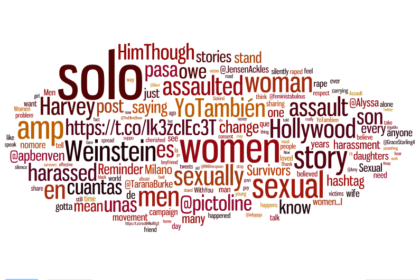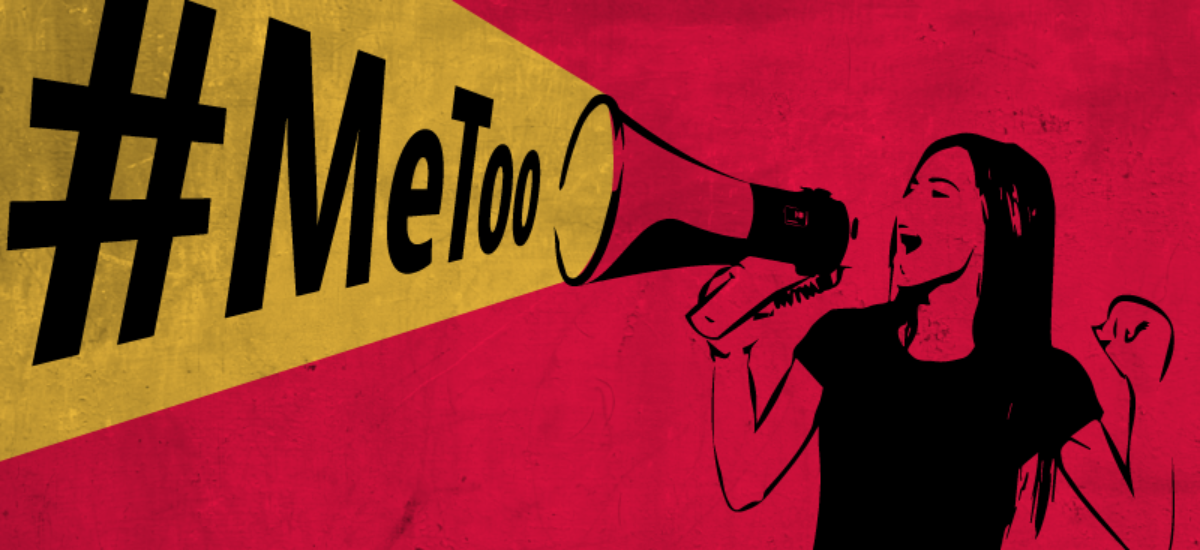Featured image courtesy The Daily Star
On October 15, actress Alyssa Milano tweeted a request that inadvertently breathed new life into a movement.
‘Me Too’ was initially coined by Tarana Burke, who eventually formed a non-profit organization to help victims of sexual harassment and assault. Milano’s tweet was a response to allegations of sexual assault and harassment levelled against Hollywood producer Harvey Weinstein.
It didn’t take long for #MeToo to go viral, across multiple social media platforms, including Twitter, Facebook and Instagram. Social analytics platform TalkWalker tweeted an animated gif showing the spread of the campaign across the world. More than 1.7 million tweets used the hashtag, as Milano herself noted, while there were more than 12 million posts, comments and reactions on Facebook within 24 hours.
Almost immediately there was controversy. On Twitter, some criticised the way the movement conflated sexual harassment and assault. An article in the Guardian called for people to out perpetrators as a more concrete method of action.
One thing was undeniable – the vast number of people who participated, including men and women from Sri Lanka. A spokesman from Twitter confirmed that the hashtag had been tweeted nearly half a million times in 24 hours, globally.
And yet, despite the numbers, there has been little attempt at analysing the conversation.
Due to sheer volume, it proved impossible to capture all of the tweets using the hashtag, using Google Spreadsheets’ inbuilt Twitter archiving function, (TAGS). However, a sizable sample of over 40,000 tweets were archived from October 15 to 18, viewable here.
Having captured a sizable sample, we then searched for keywords.

This is a visualisation of the conversation. Words such as assault, sexual, woman have been frequently used. Many of the sample were tweeting in Spanish – the Twitter URL referenced in the cloud is of a cartoon highlighting that sexual assault and harassment are not isolated incidents restricted to Hollywood. This explains the frequency of the term “solo” (only/alone in Spanish) and Yo también (Me Too). Harvey Weinstein was frequently referenced too, as is Alyssa Milano and Tarana Burke. Notable also is the appearance of #HimThough, a hashtag which was created shortly after #MeToo went viral, in order to “urge men to take responsibility for their actions.”
In our sample, the word “assault” appeared 5,681 times. Groundviews also searched for other assault-related keywords such as rape (1,344 occurrences), slap (19), grab (204), punch (27) and attack (101).
In comparison, harassment appeared 1,240 times. Words like whistle appeared 11 times, while words such as catcall (28) leer (20) and remark (9) also appeared in the sample.
This debunks the idea, put forward in many opinion pieces including this piece from the Telegraph, that the hashtag was solely related to sexual harassment broadly and street harassment in particular.
However, even this doesn’t truly give a sense of what the interactions around the hashtag were. Of the 5,681 tweets tagged using the word “assault” approximately 250 were of people sharing their personal experiences of assault, including rape, marital rape, childhood molestation, sexual assault and intimate partner violence.
Meanwhile, 121 out of the over 1,200 mentions of the word harassment were users recounting personal experiences. These ranged from catcalls to derogatory remarks. Many of the tweets highlighted workplace harassment, with women sharing examples ranging from inappropriate comments to untoward sexual advances from their colleagues or, at times, from immediate superiors. Many within the sample of tweets examined said they had experienced both sexual assault as well as harassment.
Also of interest were tweets acknowledging that many women would choose not to use the hashtag – either due to stigma, ennui or lack of access to social media. One of these tweets, declaring that victims of violence did not owe anyone their stories, quickly went viral. This in itself indicated the polarisation around the hashtag. A number of ‘spinoff’ hashtags, created after #MeToo went viral highlighted this. These included #HimThough, and #UsToo, the latter of which was primarily used by men and members of the LGBTIQ community. Both these hashtags reflected the general perception that #MeToo was for women only. Despite this perception, it should be noted that several men and members of the LGBTIQ community did share their personal stories in the sample Groundviews examined.
Another hashtag, #HowIWillChange attempted to take the conversation from rhetoric to action. This hashtag saw many thoughtful contributions, particularly from men on steps that could be taken to address the prevalence of sexual assault and harassment. These ranged from the simple – actively speaking out against such behavior, or donating to women’s shelters, to the more complex – acknowledging toxic behavior and pledging not to remain silent when faced with evidence of abuse.
In the space of a few days, the conversation was already showing signs of dying down.
58% of the tweets in the sample were on October 15, and 27% on October 16. Just 4% of the sample had used the #MeToo hashtag on October 18.
However, as the use of the hashtag waned, conversations on the topic continued.
In the US, a Google Spreadsheet accusing a number of men in the media of sexual harassment was widely circulated – though the disclaimer itself noted that it was “a collection of allegations and rumours”. The spreadsheet was an attempt to move conversations around sexual harassment from informal whisper networks, as they were termed, to naming and shaming. Closer to home, a list of South Asian academics also began circulating on Facebook.
Both efforts were subject to much controversy as there was no way to verify the claims being made by the women, and whether the information obtained was firsthand or based on rumour. However, they do indicate a willingness to continue these difficult conversations.
Whether this will translate into direct action has also been extensively discussed. The Hindu, for instance, raised some thought provoking questions in a recent article, arguing that the stories shared deserved more than online activism, and asking whether the stories were being ‘reduced to a hashtag.’ There was also discussion from The Wire about what the true value of all this outrage amounted to, whether it was genuine, and how it might impact a person expressing it.
Despite these caveats, #MeToo did succeed in generating conversation around sexual assault and harassment, at least more so than earlier campaigns. Within 24 hours, its use surpassed #YesAllWomen and #EverydaySexism – both trending hashtags which dealt with similar themes earlier in the year.
That alone is worth acknowledging.

